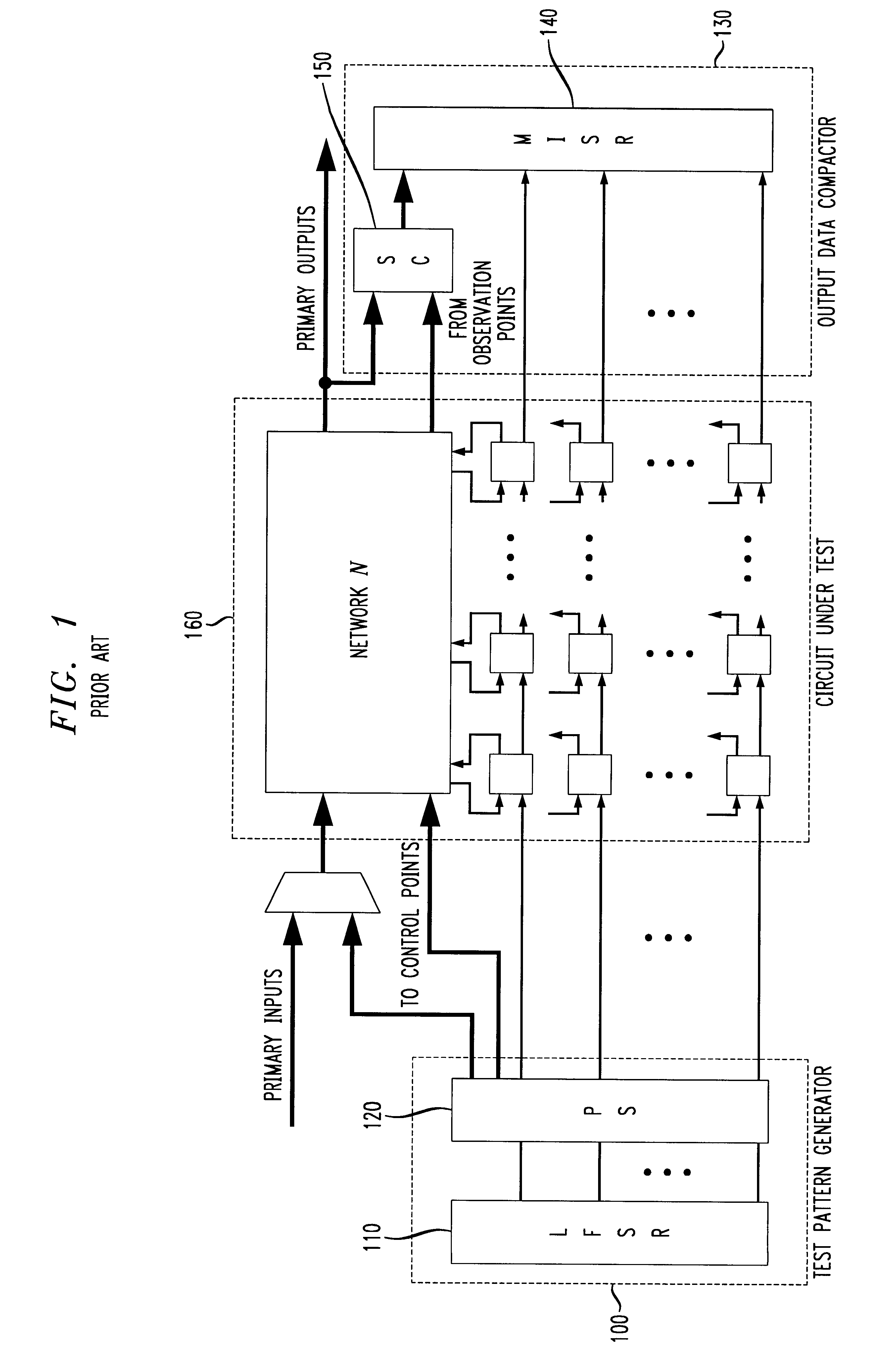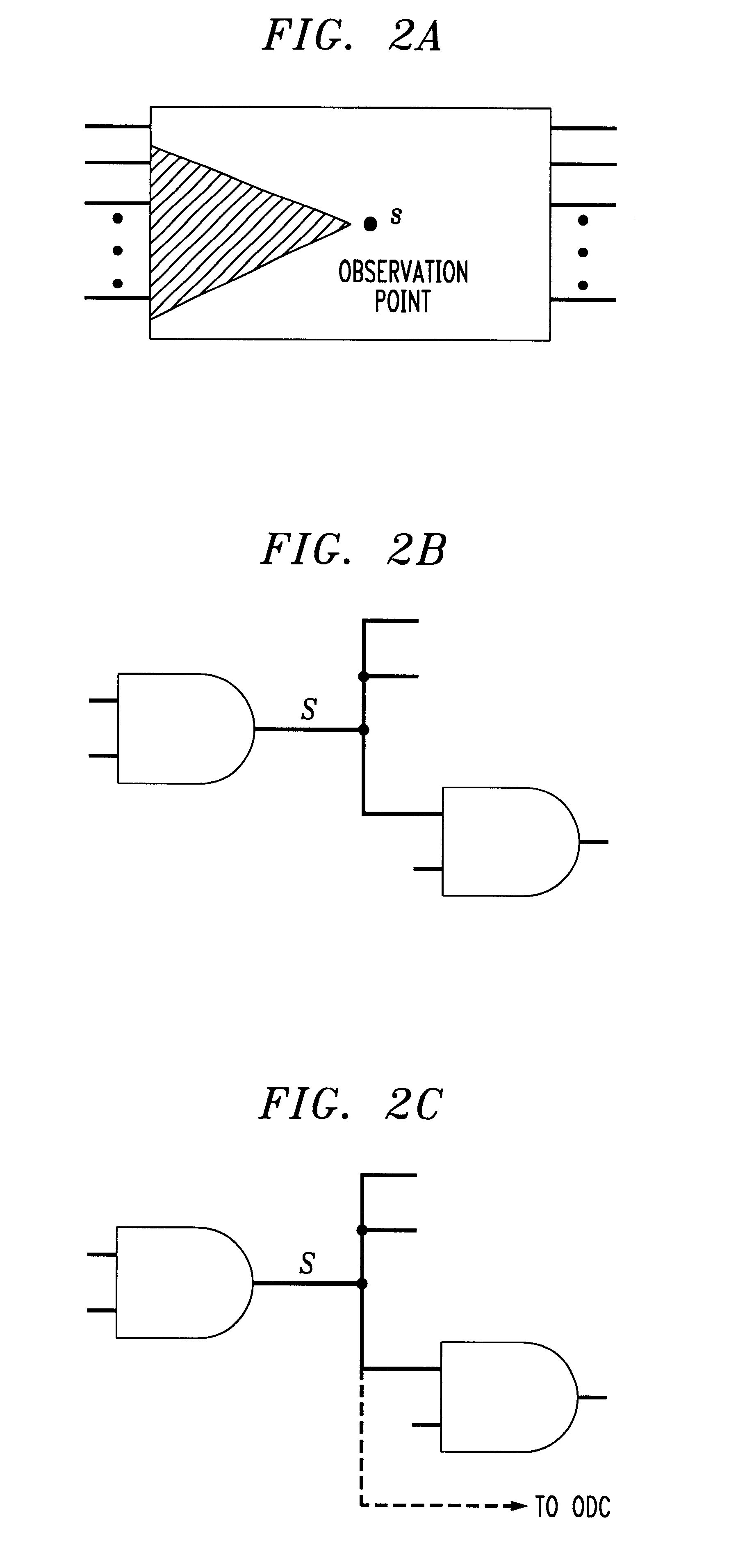Hybrid algorithm for test point selection for scan-based BIST
a hybrid algorithm and test point technology, applied in the field of hybrid cost reduction technique, can solve the problems of inability to achieve relatively large circuits, inability to reduce the fault coverage of reasonable test lengths, and high cost of fault simulation
- Summary
- Abstract
- Description
- Claims
- Application Information
AI Technical Summary
Problems solved by technology
Method used
Image
Examples
Embodiment Construction
The present invention is directed to a hybrid cost reduction method that generates an estimated value of the corresponding ACR for a particular test point candidates.
Given a fault set F, the ACR for a test point candidate s is defined as ##EQU3##
where
U.sup.org and U.sup.s are the values of the cost function U, before and after insertion of the test point candidate s, respectively; and
Pd.sub.i.sup.org and Pd.sub.i.sup.s are the detection probabilities of fault i before and after insertion of the test point s, respectively.
It has been recognized that the fault set F can be divided into two fault subsets F.sub.1 and F.sub.2. For every fault i in F.sub.1 the difference between 1 / Pd.sub.i.sup.s and 1 / Pd.sub.i.sup.org is relatively large and for faults in F.sub.2, the difference is relatively small. Since for faults in F.sub.2 the difference between 1 / Pd.sub.i.sup.s and 1 / Pd.sub.i.sup.org is relatively small, a relative good approximation of the contribution of faults in this region to th...
PUM
 Login to View More
Login to View More Abstract
Description
Claims
Application Information
 Login to View More
Login to View More - R&D
- Intellectual Property
- Life Sciences
- Materials
- Tech Scout
- Unparalleled Data Quality
- Higher Quality Content
- 60% Fewer Hallucinations
Browse by: Latest US Patents, China's latest patents, Technical Efficacy Thesaurus, Application Domain, Technology Topic, Popular Technical Reports.
© 2025 PatSnap. All rights reserved.Legal|Privacy policy|Modern Slavery Act Transparency Statement|Sitemap|About US| Contact US: help@patsnap.com



